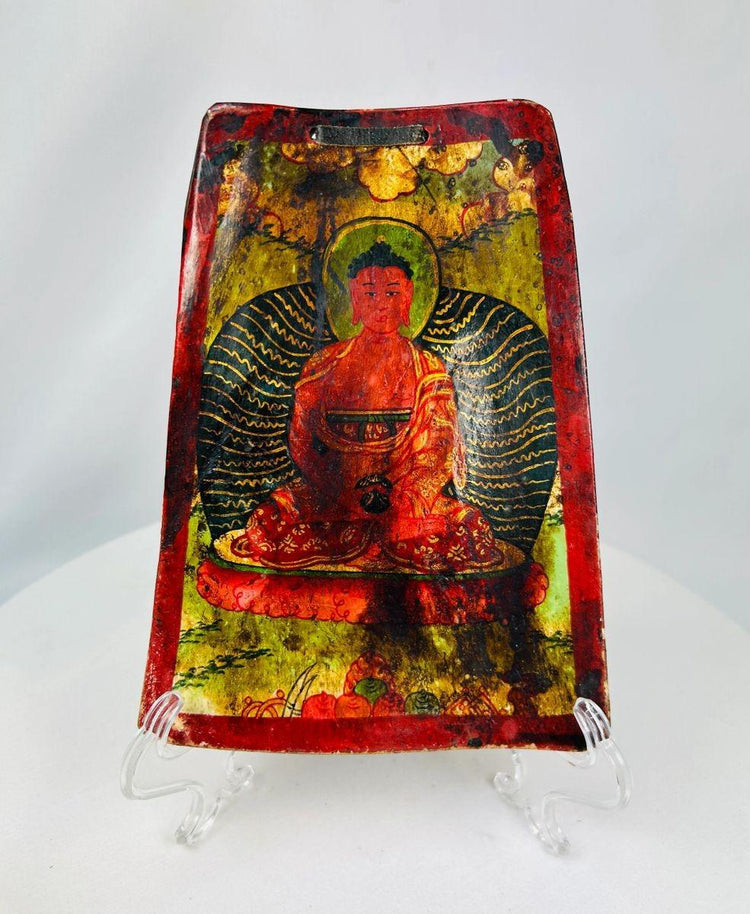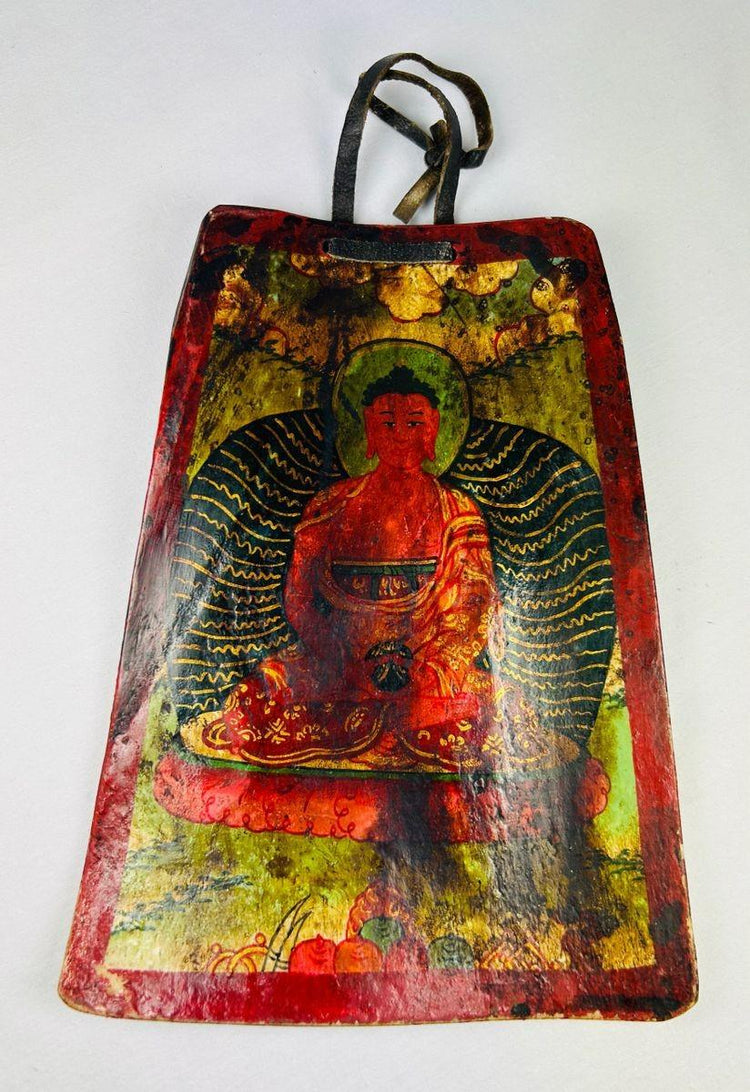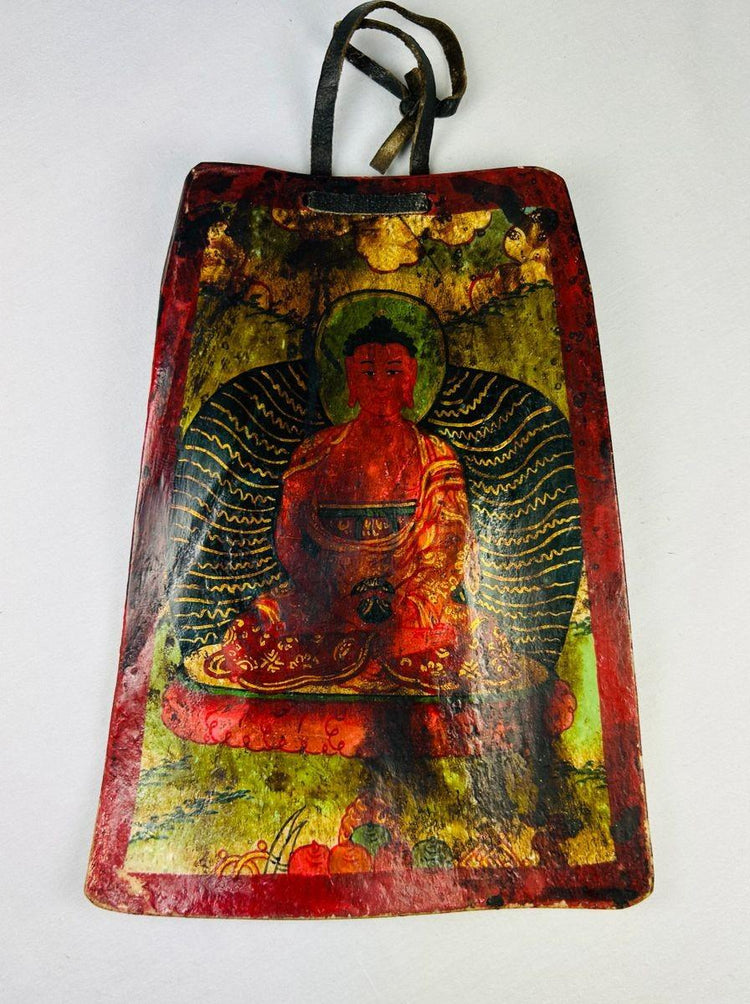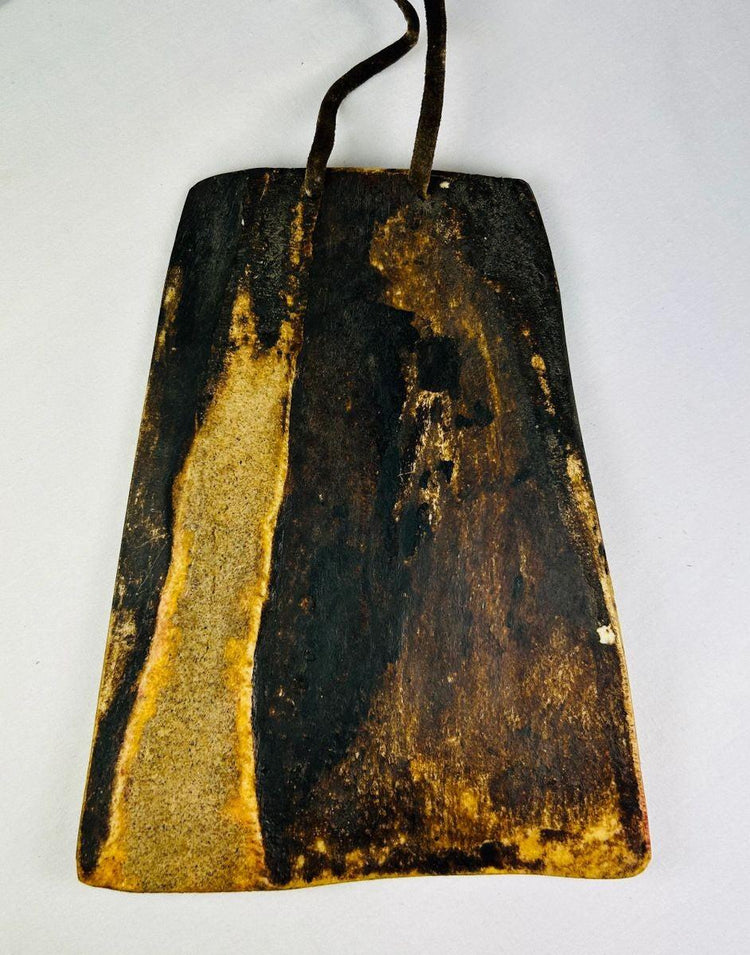Antique Tibetan Portable Amulet | Hand-Carved & Painted Bone Plaque with Buddha | 19th Century
Description
More
Less
Historical Context & Origin
Region: Tibet
Culture: Tibetan Buddhist
Material: Cow bone with hand-painted natural pigments
Period: Late Qing Dynasty (19th Century)
Description
This remarkable 19th-century Tibetan Buddhist devotional plaque is hand-carved from natural cow bone and richly painted with vivid polychrome pigments. The front depicts the Buddha seated in dhyana mudra (meditative pose), framed by a stylized mandorla with sacred cloud motifs and floral ornamentation highlighted in gold. Painted in traditional red, green, black, and gold, the plaque radiates both serenity and spiritual intensity. The back reveals the raw bone surface with its original looped leather cord, suggesting its use as a portable amulet—likely worn or carried by a monk or practitioner for protection and blessing.
Features
- Hand-carved cow bone devotional plaque
- Hand-painted Buddha in dhyana mudra on lotus throne
- Sacred mandorla, floral motifs, and gold highlights
- Original leather suspension cord intact
- Rich pigments with age-related fading and surface patina
Cultural Significance
Portable plaques such as this served as personal talismans and devotional tools, carried on pilgrimages or worn close to the body. In Tibetan Buddhism, they were believed to offer both spiritual protection and meditative focus, linking the practitioner to the Buddha’s presence even in remote or difficult environments. Their intimate size and powerful imagery embody the portable, personal dimension of Tibetan religious practice.
Condition
Good antique condition with natural surface wear. Minor pigment fading and abrasions consistent with devotional use and age. Structurally stable with no visible restoration.
Dimensions (approximate)
Height: 7 in
Width: 5.5 in
Age
Estimated late Qing Dynasty, circa 19th Century
Description
Historical Context & Origin
Region: Tibet
Culture: Tibetan Buddhist
Material: Cow bone with hand-painted natural pigments
Period: Late Qing Dynasty (19th Century)
Description
This remarkable 19th-century Tibetan Buddhist devotional plaque is hand-carved from natural cow bone and richly painted with vivid polychrome pigments. The front depicts the Buddha seated in dhyana mudra (meditative pose), framed by a stylized mandorla with sacred cloud motifs and floral ornamentation highlighted in gold. Painted in traditional red, green, black, and gold, the plaque radiates both serenity and spiritual intensity. The back reveals the raw bone surface with its original looped leather cord, suggesting its use as a portable amulet—likely worn or carried by a monk or practitioner for protection and blessing.
Features
- Hand-carved cow bone devotional plaque
- Hand-painted Buddha in dhyana mudra on lotus throne
- Sacred mandorla, floral motifs, and gold highlights
- Original leather suspension cord intact
- Rich pigments with age-related fading and surface patina
Cultural Significance
Portable plaques such as this served as personal talismans and devotional tools, carried on pilgrimages or worn close to the body. In Tibetan Buddhism, they were believed to offer both spiritual protection and meditative focus, linking the practitioner to the Buddha’s presence even in remote or difficult environments. Their intimate size and powerful imagery embody the portable, personal dimension of Tibetan religious practice.
Condition
Good antique condition with natural surface wear. Minor pigment fading and abrasions consistent with devotional use and age. Structurally stable with no visible restoration.
Dimensions (approximate)
Height: 7 in
Width: 5.5 in
Age
Estimated late Qing Dynasty, circa 19th Century
You May Also Like

















